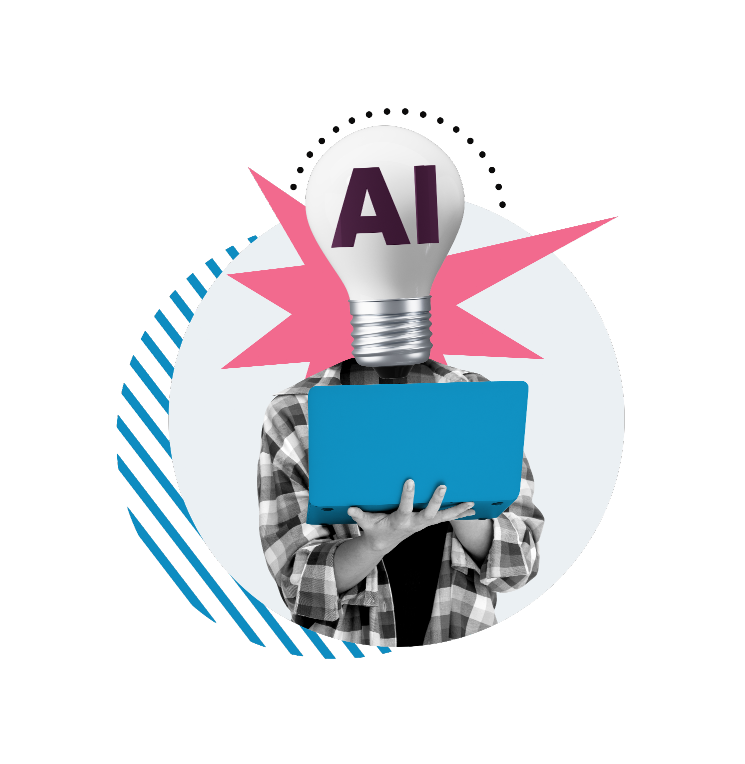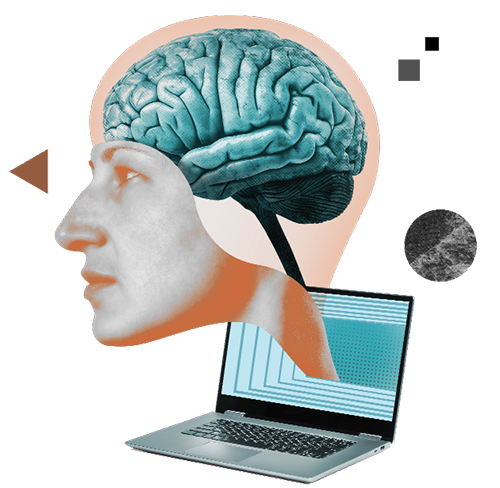Benefits of Augmented Analytics Solutions
Augmented analytics automates insights, reduces errors, and drives data-driven decisions.
Augmented Analytics Challenges
Data Quality
Lack of good quality data and strong data governance results in invaluable insights and poor decisions. For the successful adoption of augmented analytics, data must be robust.

Context and Critical Thinking
Striking the right balance between automated AI solutions and human input is very important. Adding context and critical thinking is necessary for making informed decisions. Emphasizing explainable AI, responsible AI, and governed AI is necessary for effectiveness.

SGA’s Approach to Augmented Analytics
Navigate the 6-step approach to augmented analytics solutions.
It involves multiple aspects, including master data management, data profiling, cleansing and standardization, data validation, data integration, data governance, continuous monitoring, and reinforcement learning through human feedback RLHF. SGA works with some of the largest banks and other Fortune 500 companies to provide holistic support for master data management and related strategies.
Ontologies and Semantics helps convert the data into business language and provides business context to obtain insights from the data. Ontologies and Semantics helps define complex relationship between the data sources and helps create smart & intelligent BI solutions which helps business users in data discovery and answer intricate queries.
It involves identifying unusual patterns, behaviors, or outliers in business data that deviate from the norm or expected performance. Management teams should focus on identifying, isolating, and understanding the reason behind these anomalies. If successfully implemented, anomaly detection can help identify localized effects and areas of focus. Trend anomalies also help reveal inflection points or change points that present threats or provide opportunities.
While de-averaging and identifying anomalies is the first step to augmented analytics, the real value lies in understanding their causes. At SGA, we rely on algorithms that can identify such patterns. We employ Bayesian statistics, especially causal models, to identify same-time and lagged correlations from past data that can serve as a guide to analyze the root causes of business anomalies.
Timely, localized, and personalized insights improve the outcomes of the insight generation process. Ultimately, organizations rely upon field sales teams, operations teams, contact center teams, and other managers who may not be data professionals. The core of augmented analytics is simplifying data into valuable insights. SGA leverages the power of large language models (LLMs), which can be contextualized through RAGs or fine-tuned for hyperparameters. This ensures that insights are personalized, follow the right tone and tenor, and align with the organizations brand guidelines.
To make augmented analytics effective, insights can be delivered in the form of alerts, as a complement to scheduled reports. A robust monitoring and measurement system will also enable operators to provide feedback on the information, allowing the system to improve over time. At SGA, our focus is on analytics, microservices, and cloud-based engineering. Our systems also consider measurement and monitoring as a key element, and always set up for a human-in-the-loop process.
It involves multiple aspects, including master data management, data profiling, cleansing and standardization, data validation, data integration, data governance, continuous monitoring, and reinforcement learning through human feedback RLHF. SGA works with some of the largest banks and other Fortune 500 companies to provide holistic support for master data management and related strategies.
Ontologies and Semantics helps convert the data into business language and provides business context to obtain insights from the data. Ontologies and Semantics helps define complex relationship between the data sources and helps create smart & intelligent BI solutions which helps business users in data discovery and answer intricate queries.
It involves identifying unusual patterns, behaviors, or outliers in business data that deviate from the norm or expected performance. Management teams should focus on identifying, isolating, and understanding the reason behind these anomalies. If successfully implemented, anomaly detection can help identify localized effects and areas of focus. Trend anomalies also help reveal inflection points or change points that present threats or provide opportunities.
While de-averaging and identifying anomalies is the first step to augmented analytics, the real value lies in understanding their causes. At SGA, we rely on algorithms that can identify such patterns. We employ Bayesian statistics, especially causal models, to identify same-time and lagged correlations from past data that can serve as a guide to analyze the root causes of business anomalies.
Timely, localized, and personalized insights improve the outcomes of the insight generation process. Ultimately, organizations rely upon field sales teams, operations teams, contact center teams, and other managers who may not be data professionals. The core of augmented analytics is simplifying data into valuable insights. SGA leverages the power of large language models (LLMs), which can be contextualized through RAGs or fine-tuned for hyperparameters. This ensures that insights are personalized, follow the right tone and tenor, and align with the organizations brand guidelines.
To make augmented analytics effective, insights can be delivered in the form of alerts, as a complement to scheduled reports. A robust monitoring and measurement system will also enable operators to provide feedback on the information, allowing the system to improve over time. At SGA, our focus is on analytics, microservices, and cloud-based engineering. Our systems also consider measurement and monitoring as a key element, and always set up for a human-in-the-loop process.


